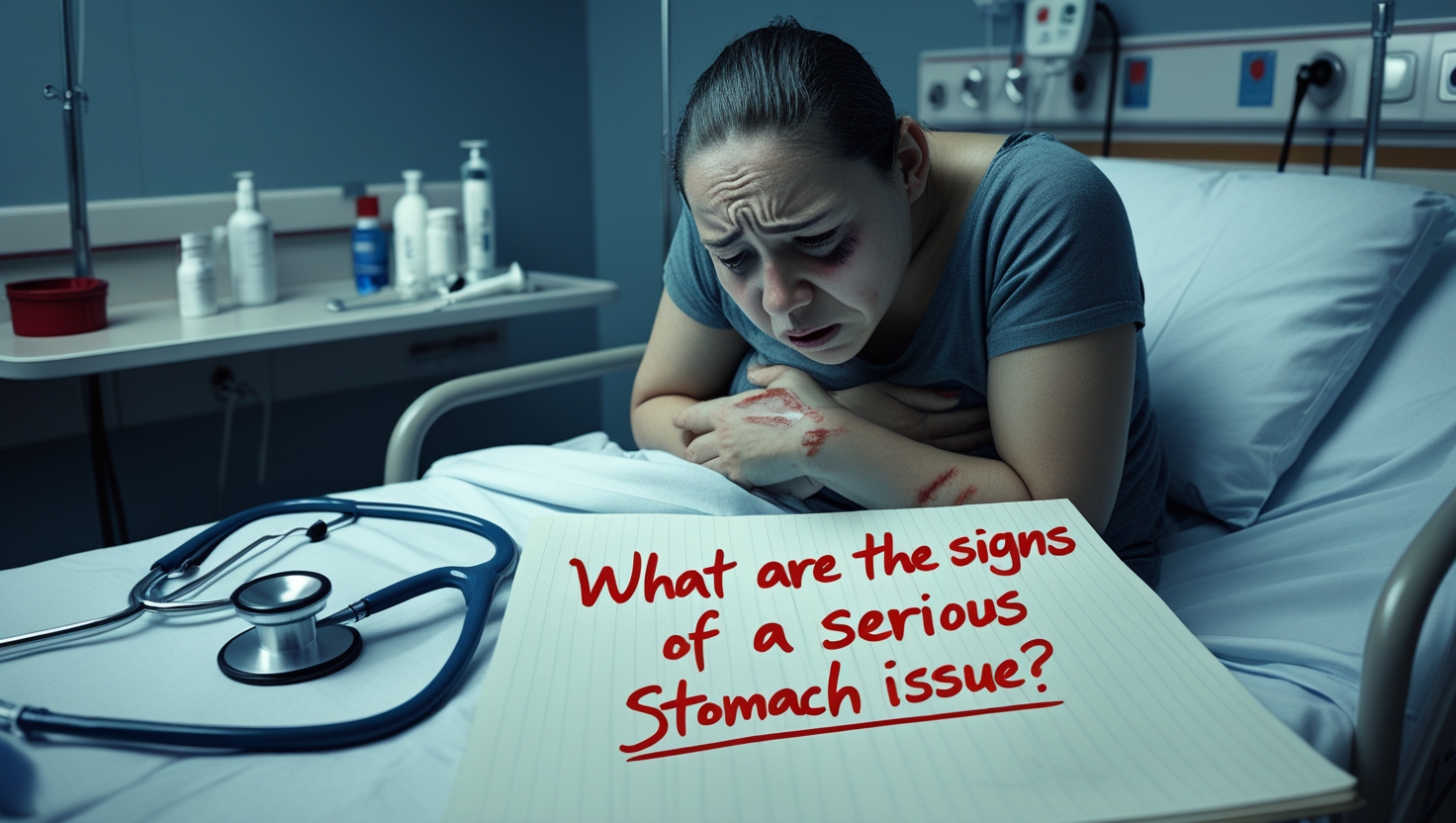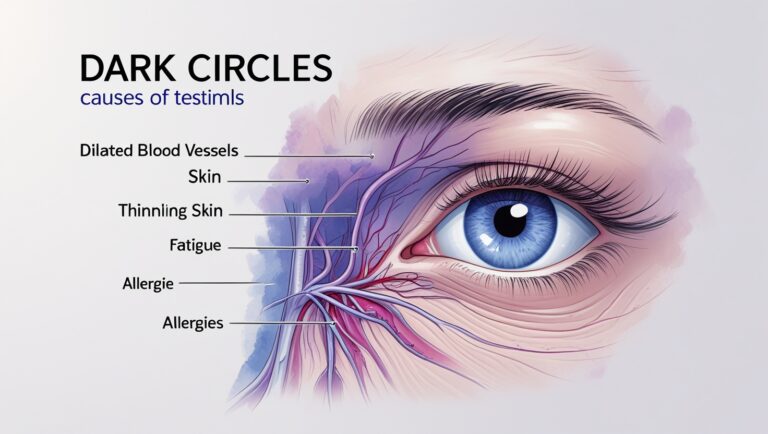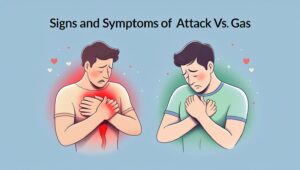Table of Contents
- Introduction
- Understanding Stomach Pain: What’s Normal vs. What’s Not
- Common Causes of Stomach Discomfort
- Warning Signs of a Serious Stomach Problem
- Red Flag Conditions You Should Know About
- Real-Life Scenarios: When to Worry
- How Doctors Diagnose Serious Stomach Conditions
- Tips to Ease Stomach Issues at Home (When It’s Safe)
- Lifestyle Habits That Protect Your Gut
- When to See a Doctor or Visit the ER
- Myths About Stomach Pain
- Final Thoughts and Takeaway Advice
1. Introduction
We all experience stomach aches from time to time. Maybe it’s from eating too fast, too much, or the wrong thing. But how can you tell when that belly pain is more than just a passing discomfort? When should you actually worry?
In this detailed guide, you’ll learn how to recognize the signs of a serious stomach issue, what symptoms shouldn’t be ignored, and what actions you should take to protect your health.
2. Understanding Stomach Pain: What’s Normal vs. What’s Not
Stomach pain is common and usually harmless. But not always.
Typical, non-serious stomach pain:
- Mild cramps after eating
- Temporary bloating
- Pain that improves with rest or antacids
Potentially serious stomach pain:
- Sharp or stabbing pain
- Pain that wakes you up at night
- Discomfort lasting more than a few days
Understanding your symptoms can make all the difference.
3. Common Causes of Stomach Discomfort
Indigestion (Dyspepsia)
- Feeling full too quickly
- Burning in the upper stomach
- Often triggered by fatty or spicy foods
Gas and Bloating
- Usually due to swallowing air or bacterial fermentation
- Common after high-fiber meals or carbonated drinks
Constipation
- Infrequent bowel movements
- Hard, dry stools
- Causes abdominal discomfort and bloating
Food Poisoning
- Contaminated food can cause nausea, vomiting, and diarrhea
- Usually resolves within 24–48 hours
4. Warning Signs of a Serious Stomach Problem
If you experience any of the following symptoms, take them seriously:
Persistent or Severe Pain
- Pain lasting longer than 48 hours
- Intensity that interferes with daily life
Blood in Stool or Vomit
- Bright red or dark tarry stool
- Vomit that looks like coffee grounds
- May indicate internal bleeding
Unexplained Weight Loss
- Losing weight without diet or exercise changes
- Could suggest malabsorption or cancer
Chronic Diarrhea or Vomiting
- More than 2-3 days in a row
- Risk of dehydration and electrolyte imbalance
Pain with Fever or Chills
- Could indicate infection or inflammation (like appendicitis)
5. Red Flag Conditions You Should Know About
Appendicitis
- Sudden pain in lower right abdomen
- Nausea, fever, and loss of appetite
- Medical emergency requiring surgery
Gallstones
- Pain in upper right abdomen, especially after eating fatty meals
- May radiate to back or shoulder
Gastritis and Stomach Ulcers
- Burning pain in upper stomach
- May worsen with hunger or stress
Pancreatitis
- Upper abdominal pain that radiates to the back
- Often triggered by alcohol or gallstones
- Requires urgent care
Inflammatory Bowel Disease (IBD)
- Includes Crohn’s disease and ulcerative colitis
- Chronic diarrhea, pain, fatigue, and weight loss
Stomach Cancer
- Rare, but serious
- Often presents with weight loss, persistent pain, and anemia
6. Real-Life Scenarios: When to Worry
Scenario 1: Dull pain after meals for weeks
- Could be: Ulcer or gastritis
- What to do: Visit a doctor for evaluation and testing
Scenario 2: Sudden stabbing pain in the lower right side
- Could be: Appendicitis
- Action: Go to the ER immediately
Scenario 3: Constant diarrhea for over a week
- Could be: IBD or infection
- Advice: Schedule a GI appointment
Scenario 4: No appetite and unexplained weight loss
- Could be: Stomach cancer or other chronic illness
- Next step: Comprehensive screening with your doctor
7. How Doctors Diagnose Serious Stomach Conditions
- Physical exam: To check tenderness or swelling
- Blood tests: To detect infection or inflammation
- Stool tests: Identify infections or bleeding
- Imaging (Ultrasound, CT scan): View organs and detect obstructions
- Endoscopy: View the esophagus, stomach, and upper intestines directly
8. Tips to Ease Stomach Issues at Home (When It’s Safe)
- Eat smaller meals to avoid bloating
- Avoid trigger foods like dairy, spicy, or fatty items
- Stay hydrated, especially during diarrhea or vomiting
- Use heat pads for cramps or muscle tension
- Try over-the-counter meds like antacids or simethicone (gas relief)
Important: Only use these tips for mild symptoms that improve with time.
9. Lifestyle Habits That Protect Your Gut
- Balanced diet: Rich in fiber, probiotics, and whole foods
- Limit alcohol and processed foods
- Stay active: Exercise aids digestion
- Manage stress: Chronic stress disrupts digestion
- Regular check-ups: Early detection is key in 2025 healthcare
10. When to See a Doctor or Visit the ER
Call a doctor if you experience:
- Ongoing pain lasting more than 2–3 days
- Recurring symptoms after meals
- Mild symptoms that don’t improve with at-home care
Go to the ER immediately if:
- You have intense, sudden stomach pain
- There is blood in your vomit or stool
- You’re running a high fever
- You’re dehydrated and unable to keep fluids down
11. Myths About Stomach Pain
- Myth: Spicy food always causes ulcers
- Fact: Most ulcers are caused by H. pylori bacteria or NSAID overuse
- Myth: You must feel pain to have a serious issue
- Fact: Some stomach cancers or IBD cases begin silently
- Myth: All stomach pain needs antibiotics
- Fact: Many causes are viral or non-infectious
12. Final Thoughts and Takeaway Advice
Most stomach pain is harmless, but some symptoms are worth a second look. If your gut is trying to tell you something, listen.
Take Action Today:
- Track your symptoms in a health journal
- Avoid self-diagnosing through search engines
- Schedule a check-up if anything feels “off”
- Share this guide with family and friends to raise awareness
A healthy gut leads to a healthier life. Don’t ignore the warning signs. Trust your instincts, and seek care when needed.









